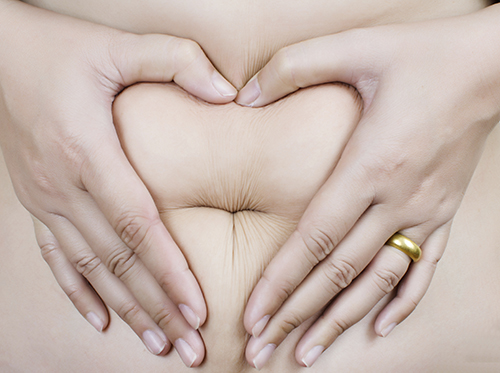by Matt Bindewald MD at Plastic Surgery Texas

I Had Weight Loss Surgery… Now What?
If you have lost your excess weight through diet and exercise alone, or with the assistance of bariatric surgery, your achievement is to be applauded. However, it may have left you with some new challenges. Significant weight loss can result in an excessive amount of redundant skin, which may be coupled with residual fatty tissue. Plastic surgery may be able to address these concerns and help restore you to the form that you desire.
Prepping for Body Contouring Surgery
There are several key steps involved in preparing for body contouring procedures, including the following:
- Achieving weight loss goals: One of the most important steps you should take is to ensure you’ve reached your weight loss goals in advance, whether through weight loss surgery or diet and exercise alone. Not only will this improve your chances of having the best possible outcome, but it will make the surgery itself and the recovery easier on you.
- No smoking: Smoking cessation is also of paramount importance. Nicotine products of any kind impair wound healing and their ingestion should be stopped well in advance of any elective procedure.
- Review medications: Your medications and supplements should be reviewed with your surgeon. Any blood thinning medications must be stopped if they are not vitally important. These include aspirin, ibuprofen, naproxen, fish oil, gingko biloba, garlic capsules, etc. You should also cease taking oral contraceptive pills or other estrogen-containing medications as they may increase the chances of blood clot formation.
You may need to coordinate with your primary care provider to ensure that chronic medical conditions such as high blood pressure, diabetes and any nutritional deficiencies are stabilized prior to any body contouring surgery. Once again, these are elective procedures and they should only be undertaken by patients who are well enough to tolerate them.
What is Body Contouring?
The following is a brief description of some of the more common post-weight loss plastic surgery body contouring procedures. It is important to note that for some patients, it may be possible to combine multiple procedures at one time. However, this might not be feasible for all patients or all surgeries. Here’s a list of eight body contouring procedures.
1. Abdominoplasty
The abdominoplasty, often referred to as the tummy tuck, involves the removal of excess skin from the abdomen. There are various types of abdominoplasties performed, but usually the surgery is completed through an incision at the waistline. A vertical component might be required to achieve the best contour, and the muscles of the abdominal wall may also be tightened during this procedure. Liposuction could be a good adjunct to this procedure. Abdominoplasties are most commonly performed under general anesthesia and may require overnight hospitalization.
2. Panniculectomy
A panniculectomy is similar to an abdominoplasty in some ways. Typically, it is performed for a functional problem such as hygiene, mobility or skin breakdown. It entails the removal of the pannus, which is a large fold of skin and fat hanging down from the abdominal wall. This procedure typically does not include tightening of the abdominal muscles and may not require movement of the belly button. It is usually performed via an incision from hip to hip at the waistline.
3. Brachioplasty
A brachioplasty or arm lift addresses the loose, redundant skin of the arms. This usually involves the upper arms, but may extend to the forearm. A variety of incisions can be used for this operation, depending upon the area of greatest excess. Most commonly, brachioplasties are performed via incisions at the back of the arm along the tricep area or along the inside of the arm. In rare cases, a good result can be achieved via an incision in the armpit region alone.
4. Thigh Lift
This procedure is similar to the brachioplasty, but involves the thighs and legs. The thigh lift removes excess skin and fat from the inner thighs. It may be performed through incisions in the groin area and extend down the inside of the thigh toward the knee in cases of more significant excess.
5. Body Lift Procedures
There are many different types of body lift procedures, the goals of which are similar to the surgeries previously discussed: to remove unwanted folds of redundant skin. In the lower body lift, an abdominoplasty is combined with removal of excess skin and fat from the lower back area just above the buttocks. In some cases, this tissue is not removed but used to augment the buttocks, which may have a deflated appearance following significant weight loss.
There are a variety of upper body lift procedures as well. These aim to correct the rolls of skin and fat that occur on the patient’s back. These procedures may be done through an incision that is targeted to conform to the bra line.
6. Mastopexy
Drooping of the breast is a normal age-related change that can be exacerbated by massive weight loss. A mastopexy or breast lift is a tissue rearrangement of the breast that involves the nipple and breast skin in mild cases, or underlying breast tissue in more significant cases. There are many varieties of this procedure, all of which aim to restore a more youthful contour to the breast.
A circumareolar or crescentric mastopexy typically involves an incision around the nipple to move the nipple position in mild cases of breast ptosis or drooping. A vertical mastopexy may involve incisions around the nipple and from the nipple down toward the base of the breast. A traditional mastopexy may involve an anchor-shaped incision around the nipple, down and then across the base of the breast at the fold. Mastopexies may be combined with augmentation in some cases, either with implants or utilizing the patient’s own tissue.
7. Gynecomastia Surgery
Gynecomastia refers to the development of breast tissue in males, a condition that can be partially explained in patients who were obese due to higher levels of circulating estrogen. This often proves to be a difficult deformity to remedy with weight loss only. Depending upon the amount of tissue and excess skin, gynecomastia can be treated either with liposuction or a variety of excisional techniques. If there is little excess skin, liposuction may be appropriate. On the other end of the spectrum, if there is a large amount of tissue and excess skin, a breast reduction technique may need to be employed to obtain the best contour.
8. Liposuction
Liposuction is the process of removing localized fatty deposits under the skin using metal cannulas (tubes) connected to suction. This is preceded by the infiltration of solution into the areas to assist in removal and to minimize bleeding. Liposuction on its own may not be as useful in the post-weight loss patient in that it does little to address the presence of excess skin, but it may be used in conjunction with the skin removal procedures outlined above to achieve a better result.
Body Contouring Recovery
The recovery process is different for each patient and is determined by a host of factors. The procedure or procedures performed will dictate the length of recovery. Single procedures such as mastopexy or gynecomastia surgery can typically be performed on an individual as an outpatient, with return to work in a week (not physical labor). Larger procedures such as abdominoplasties or body lift procedures may require a hospital stay of one to two days. Combined procedures typically will also lengthen the recovery time and increase the chance of needing to stay in the hospital. The patient’s age and preoperative condition will also affect the recovery time. Younger, more active and healthier patients tend to recover more quickly and with fewer complications.
Overall, barring any complications, patients are expected to be up walking the day of surgery or the morning after. They should return to light activity within first week or two and hopefully be back to normal activity by six weeks. If you are interested in learning more about Dr. Bindewald’s body contouring procedures, visit PlasticsurgeryTX.com.

